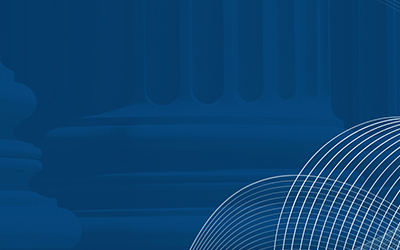The Families First Coronavirus Relief Act (FFCRA) and the Coronavirus Aid, Relief, and Economic Security Act (CARES Act) provided COVID-related sick leave for employees and relief to employers with 500 or fewer employees. The paid leave provisions of FFCRA and CARES expired on December 31, 2020. Several states enacted laws similar to the federal legislation aimed at providing COVID paid sick leave to workers of employers with 500 or greater employees. Some of these states mirrored both the type of relief available to covered employees and the relief’s expiration date. One such state was California. On March 19, 2021, Governor Gavin Newsom of California signed Senate Bill No. 95. The newly enacted state legislation amended the California Labor Code Section 248.3 to reinstate California’s COVID-related supplemental paid sick leave (SPSL) retroactively to January 1, 2021.
Section 248.3 of the Labor Code provides SPSL to covered employees for specific COVID-related reasons.
The California law defines covered employers as employers in the state of California with greater than 25 employees. Previously SPSL only applied to Employers with greater than 500 employees. Paid leave is available to workers unable to work or telework for an employer due to any reasons that qualify the employee for SPSL. The qualifying reasons for SPSL are when the covered employee is:
- Subject to a quarantine or isolation period related to COVID-19 as defined by an order or guidelines of the State Department of Public Health, the Centers for Disease Control and Prevention, or a local health officer who has jurisdiction over the workplace. If the covered employee is subject to more than one of the foregoing, the covered employee must be permitted to use SPSL for the minimum quarantine or isolation period under the order or guidelines that provides for the longest such minimum period;
- Advised by a healthcare provider to self-quarantine due to concerns related to COVID-19;
- The covered employee is attending an appointment to receive a vaccine for protection against contracting COVID-19;
- Experiencing symptoms related to a COVID-19 vaccine that prevent the employee from being able to work or telework;
- Experiencing symptoms of COVID-19 and seeking a medical diagnosis;
- Caring for a family member who is subject to a quarantine or isolation period related to COVID-19 or who has been advised to self-quarantine due to COVID-19; or
- Caring for a child whose school or place of care is closed or otherwise unavailable for reasons related to COVID-19 on the premises.
Senate Bill No. 95 amended the amount of leave available to covered employees and how it is calculated under the law.
The law entitles employees to 80 hours of SPSL if the employer considers them to be a full-time employee or the employee works or was scheduled to work 40 hours per week. For other employees, they are entitled to SPSL as follows:
- If they have a standard weekly schedule, the covered employee’s total number of hours is normally scheduled to work for the employer over two weeks.
- If they work a variable number of hours, 14 times the average number of hours the covered employee worked each day for the employer in the six months preceding the date the covered employee took COVID-19 supplemental paid sick leave. If the covered employee has worked for the employer over a period of fewer than six months but more than 14 days, this calculation must be made over the entire period the covered employee has worked for the employer.
- If they work a variable number of hours and have worked for the employer over a period of 14 days or fewer, the total number of hours the covered employee has worked for that employer.
Employees can decide how much SPSL they want to use up to the total available allotment of leave.
The total number of SPSL hours to which a worker is entitled is in addition to any other type of paid sick leave available to the covered employee. Section 248.3, as amended by Senate Bill No. 95, details the hourly compensation rate for employees. The law does not require employees to pay more than $511 per day and $5,110 in the aggregate. The compensation rate is calculated based on an employee’s exempt/non-exempt status. Employers must calculate SPSL for exempt covered employees in the same manner as the employer calculates wages for other forms of paid leave time. For non-exempt covered employees, employers must calculate their hourly SPSL compensation rate by the highest of:
- The same manner as the regular rate of pay for the workweek in which the covered employee uses COVID-19 supplemental paid sick leave, whether or not the employee actually works overtime in that workweek;
- Dividing the covered employee’s total wages, not including overtime premium pay, by the employee’s total hours worked in the full pay periods of the prior 90 days of employment;
- The state minimum wage; or
- The local minimum wage to which the covered employee is entitled.
The requirement to provide SPSL takes effect 10 days after the date of the law’s enactment or March 29, 2021.
Once the law becomes effective, the provisions of the law apply retroactively to January 1, 2021. Employers must provide retroactive leave payments to employees as follows:
- For any covered leave taken after January 1, 2021, if the employer did not compensate the covered employee in an amount equal to or greater than the amount of compensation for SPSL to which the employee is entitled under the new law, if the employee submits a written or oral request, the employer must give the employee a retroactive payment.
- Any retroactive payment must correspond to the number of hours owed to the employee. The amount of the retroactive payment counts towards the total number of SPSL hours available to the individual.
- Retroactive payments must be paid on or before the payday for the next full pay period after the covered employee’s oral or written request. The retroactive payment must be reflected on the written notice for the corresponding pay period.
Covered employers should read the new SPSL law’s complete provisions and the accompanying 2021 COVID-19 Supplemental Paid Sick Leave FAQs for additional information on the new law, including the requirement to provide employees with the state-mandated notice. Before making any changes to its leave policy, an employer should seek its legal counsel’s advice.
In case you missed it, view materials from our March 16 special compliance webinar: The Impact of the American Rescue Plan Act of 2021 (ARPA)
EPIC offers this material for general information only. EPIC does not intend this material to be, nor may any person receiving this information construe or rely on this material as, tax or legal advice. The matters addressed in this document and any related discussions or correspondence should be reviewed and discussed with legal counsel prior to acting or relying on these materials.
Sign up for our Compliance Matters Newsletter
You’ll receive our monthly newsletter, as well as special compliance alerts and invitations to our compliance webinars
Related Content
Products
Employee Benefits Consulting
Our dedicated EPIC benefits team is focused on delivering better outcomes – to both your benefits program ...
Products
Compliance
Our expert Compliance team provides comprehensive consulting services and in-depth education regarding the ...



